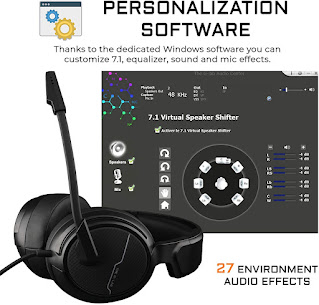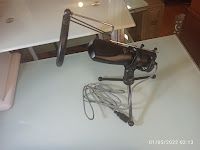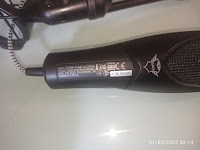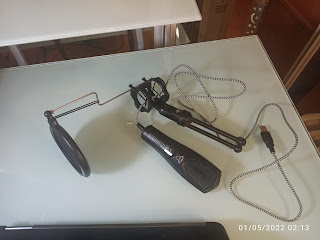Guide Preview of Fixing Western Digital Caviar Green Bug
There are three main problems:- LCC and RAID: affects ALL WD Caviar Green, without exception everyone who has a Caviar Green has to apply the solution of the LCC, and if it has it in RAID, also apply the solution for RAID..
- Poor performance: affects some specific models If your hard drive has a ridiculous performance, try to process an RMA because there is nosolution.
1. Poor Performance
After formatting, all hard drives work well and have optimal performance. But over time, especially as it is giving them use, begin to suffer performance problems. In the official forums there are users that Western Digital announced poor transfer speeds around 2MB / s, freezing and even system crashes.Models affected:
- WD15EADS (1.5TB 32MB cache), especially 00P8B0 submodel (except submodel 00R6B0)
- WD15EARS (1.5TB 64MB cache), especially 00P8B0 submodel (except submodel 00R6B0)
- WD20EADS (2TB 32MB cache), especially 00P8B0 submodel (except submodel 00R6B0)
- - http://community.wdc...mance/td-p/5242
- - http://community.wdc...stops/td-p/1217
- - http://community.wdc...crazy/td-p/1547
- http://www.synology....u&product_id=63
- http://wiki.qnap.com...Hard_Drives (3.5
No solution
2 Death excess heads parked (LCC)
To save energy, the entire range Caviar Green uses a somewhat aggressive but fairly common method, consisting park the heads in the security zone once after some time of inactivity.The number of times a disc parks the heads is registered by the value of "Load Cycle Count" (or LCC) of SMART. Users have detected a rapid increase in this value, calculating that in less than two years may exceed the figure of the 300,000estimated to be parked within the lifetime of a disk, with only about 4 or 5 hours of use.
ID # FLAG VALUE WORST THRESH ATTRIBUTE_NAME TYPE UPDATED WHEN_FAILED RAW_VALUE 1 Raw_Read_Error_Rate 0x002f 200 200 051 Pre-fail Always - 0 3 Spin_Up_Time 0x0027 143 141 021 Pre-fail Always - 9808 4 Start_Stop_Count Old_age 0x0032 100 100 000 Always - 991 5 Reallocated_Sector_Ct 0x0033 200 200 140 Pre-fail Always - 0 7 100 253 000 0x002e Seek_Error_Rate Old_age Always - 0 9 Power_On_Hours Old_age 0x0032 099 099 000 Always - 827 10 Spin_Retry_Count Old_age 0x0032 100 100 000 Always - 0 11 Calibration_Retry_Count Old_age 0x0032 100 100 000 Always - 0 12 Power_Cycle_Count Old_age 0x0032 100 100 000 Always - 421 Power-Off_Retract_Count 0x0032 192 200 200 000 Old_age Always - 36 Load_Cycle_Count 0x0032 193 197 197 000 Old_age Always - 10413 Temperature_Celsius 0x0022 194 124 104 000 Old_age Always - 28 Reallocated_Event_Count 0x0032 196 200 200 000 Old_age Always - 0 Current_Pending_Sector 0x0032 197 200 200 000 Old_age Always - 0 Offline_Uncorrectable 0x0030 198 200 200 000 Old_age Offline - 0 UDMA_CRC_Error_Count 0x0032 199 200 200 000 Old_age Always - 1 Multi_Zone_Error_Rate 0x0008 200 200 200 000 Old_age Offline - 0Models affected:
- All Western Digital Caviar Green
Solution:
- - Lower the WDIDLE3 utility Western Digital page: http://support.wdc.c...sid=113&lang=en
- - Copy the utility to a floppy disk, CD or USB boot with MsDOS or FreeDOS
- - Switch off all PC hard disks, connected to plate and let only those who want to fix
- - Start in MsDOS / FreeDOS and run: wdidle3.exe / s300
NOTE: In many places it is suggested to use the parameter "/ d" to completely disable the function, but this seems to cause major performance problems, and in some cases parked constant heads, so we recommend using "/ s 300" to set the time parked head to 5 minutes, which is the maximum allowed.References:
- - http://www.timoroso.com/journal/9
- - http: //community.wdc.../highlight/true
- - http: //chbits.blogsp...wdtler-and.html
The WDIDLE3 utility can be used safely in the following models:
RE Drives - WD1000FYPS-01ZKB0, WD7500AYPS-01ZKB0, WD7501AYPS-01ZKB0
GP Drives - WD20EADS, WD20EARS, WD15EADS, WD15EARS, WD10EADS, WD10EARS, WD8000AARS,
WD7500AADS, WD7500AARS, WD6400AADS, WD6400AARS, WD5000AADS, WD5000AARS
3 Corruption of RAID Volume
This problem only affects other users wishing to use these hard drives in RAID. Western Digital Caviar Green warns that the range does not support RAID volumes, and it invites us to buy the business range RE-4, significantly more expensive. The real reason is given by the way in which the Green Caviar errors manage read / write.All hard drives have an additional space sectors beyond the actual disk space. These additional sectors are used to relocate information when a problem is detected in a physical area of the disc.
These operations take a hardly predictable time, from a few seconds to several minutes.'s Problem for a RAID volume is expected to answer the hard drive within a limited time, usually around 10 seconds. If there is a disc that appears to be frozen or no response after a read / write, the RAID controller is marked as invalid and calls for its replacement and rebuilding the RAID volume.
The solution is to limit the time of data recovery. That is, what matters is that the hard drive try to make a quick recovery of the sector, and if this is not possible before the problem rises when the RAID controller so that it is she who makes the decision of proper recovery. Here's how the disks are configured in the RE-4 range, cutting recovery by 7-8 seconds.
Models affected:
- All Western Digital Caviar Green
Solution:
- Lower the WDTLER usefulness of this page: http: //shifteightgen...top-hard-drives
- Copy the utility to a floppy disk, CD or USB boot with MsDOS or FreeDOS
- Switch off all PC hard disks, connected to plate and let only those who want to fix
- Start in MsDOS / FreeDOS
- Run First "tlerscan.exe"
- Execute after "tler_on.exe"
References:
- http: //shifteightgen...top-hard-drives
- http: //chbits.blogsp...wdtler-and.html
-------------------------
And the silence from Western Digital about this problem is worrying.
PS: I made some screenshots (before reconfiguring the idle3) SMART values Caviar Green (WD10EARS) and another WD (WD3200AAKS) to use with the operating system for 2 years.
WD10EARS Caviar Green:
WD3200AAKS:
In those 8 hours of actual use (I plug just to make backups, e-sata via a dock), the Caviar Green had 234 "parked" head.The other for 430 days and 20 hours of use is 1455.
Eloquent.








